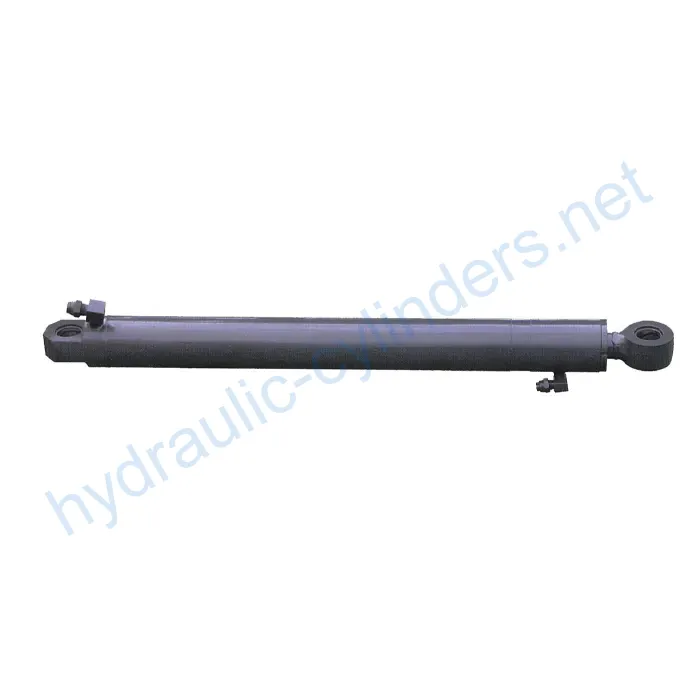Arm CylinderFor Volvo Small Excavator EC140BLC
Som en af producenterne, leverandørerne og eksportørerne af mekaniske produkter tilbyder vi hydrauliske cylindre og mange andre produkter.
Kontakt os for yderligere oplysninger.
Mail:sales@hydraulic-cylinders.net
Producent, leverandør og eksportør af hydrauliske cylindre.
Arm Cylinder for Volvo Small Excavator EC140BLC: Definition and Explanation
Arm cylinder is a specially designed hydraulic cylinder that provides linear motion and power to various mechanical arms such as excavators, cranes, and robotic arms. It plays a crucial role in the hydraulic system, allowing additional tools or attachments to move and be controlled effectively. These cylinders not only enable smooth movement but also bear heavy loads, ensuring efficient operation and reliability of machinery under different working conditions.
Arm Cylinder: Key Features
1. High-Efficiency Power Transmission: Arm cylinder provides strong linear motion and power to ensure high-efficiency performance of the mechanical arm during various operations.
2. Precise Control: The hydraulic system makes it possible for the arm cylinder to achieve precise movement control for flexible and accurate tool operation.
3. Strong Durability: Arm cylinders are typically made of high-strength materials, providing good wear and corrosion resistance suitable for long-term use in harsh environments.
4. Multi-functional Adaptability: These cylinders can be widely used in various types of machinery, including excavators, cranes, and robotic arms, to meet different working requirements.
5. Easy Maintenance: The design of arm cylinders considers ease of maintenance and replacement, making regular inspections and maintenance more convenient and reducing equipment downtime.
Arm Cylinder: Applications
Arm cylinders have a broad range of applications in different industries, including:
1. Construction: Arm cylinders control the motion of excavator and crane buckets or booms during earthmoving, material handling, and structural installation.
2. Manufacturing: Arm cylinders control the movement of robotic arms during assembly, welding, and material handling processes, improving productivity and accuracy.
3. Agricultural Machinery: Arm cylinders control the movement of operating arms in agricultural machinery such as harvesters and seeders, executing tasks such as planting, fertilizing, and harvesting.
4. Mining: Arm cylinders control the movement of mining equipment arms, performing tasks such as ore mining and handling.
5. Logistics and Transportation: Arm cylinders control the lifting and movement of cargo forks in forklifts and handling robots, achieving material handling and stacking.
Arm Cylinder: Design Considerations and Selection Criteria
The design of arm cylinders considers factors such as load-bearing capacity, sealing, durability, safety, and maintainability. Key design considerations and selection criteria include:
1. Load-Bearing Capacity: The cylinder must be able to bear the load of the arm and any attached tools or accessories.
2. Sealing: Arm cylinders use various types of seals such as piston seals and rod seals made of wear-resistant materials like polyurethane and nitrile rubber.
3. Durability: The cylinder and threaded end surfaces are precisely machined to ensure strength and wear resistance.
4. Safety: Arm cylinders have various safety features such as pressure relief valves and locking mechanisms to prevent accidents.
5. Maintainability: The cylinder design allows for easy maintenance and repair, reducing downtime and maintenance costs.
Arm Cylinder: Sealing and Lubrication
Arm cylinders use a variety of seals, including piston seals, rod seals, and wiper seals. These seals are made of wear-resistant materials such as polyurethane and nitrile rubber to ensure long-lasting sealing performance. The cylinder and threaded end surfaces are finely machined to improve wear resistance and reduce leakage. Regular lubrication with appropriate hydraulic oil is necessary to ensure smooth operation and protect the cylinder from wear and corrosion.
Arm Cylinder: Regular Inspection and Preventive Maintenance
Regular inspection and preventive maintenance are necessary to ensure the long-term performance and reliability of arm cylinders. Key measures include:
1. Regularly check the sealing performance and lubrication of the cylinder.
2. Check the cylinder for wear and damage.
3. Replace worn or damaged seals promptly.
4. Check the hydraulic oil level and quality regularly.
5. Check the safety features of the cylinder and replace any faulty components.
Arm Cylinder: Installation Guide
1. Ensure that the cylinder is compatible with the machine and the task.
2. Install the cylinder according to the manufacturer’s instructions.
3. Connect the hydraulic hoses to the cylinder and the machine.
4. Fill the hydraulic system with the recommended hydraulic oil.
5. Test the cylinder by operating the machine and checking for leaks or abnormal noise.
Arm Cylinder: Safety Considerations and Environmental Factors
Arm cylinders require proper handling and safety measures to prevent accidents and environmental damage. Safety measures include proper installation, regular inspection, and maintenance, and the use of appropriate personal protective equipment. Environmental factors such as temperature, humidity, and dust may affect the cylinder’s performance and require additional protection measures.
Arm Cylinder: Troubleshooting and Common Problems
Common problems with arm cylinders include leakage, insufficient power, and abnormal noise. Troubleshooting tips include checking the sealing performance and hydraulic oil quality, inspecting the cylinder for wear or damage, and checking the safety features. Regular inspection and maintenance can prevent many common problems.
Arm Cylinder: Conclusion
We are a professional manufacturer of replacement arm cylinders, offering a wide range of products and services. With advanced manufacturing equipment and quality control systems, we strive to provide high-efficiency, accurate, and high-quality products to meet diverse customer needs. Our company is committed to providing professional, customized, and efficient service to our customers worldwide.
Author: lyl
Take a Tour of Our VR Factory:
Take a tour of our VR factory with the following
Hydraulic Cylinder Application:


